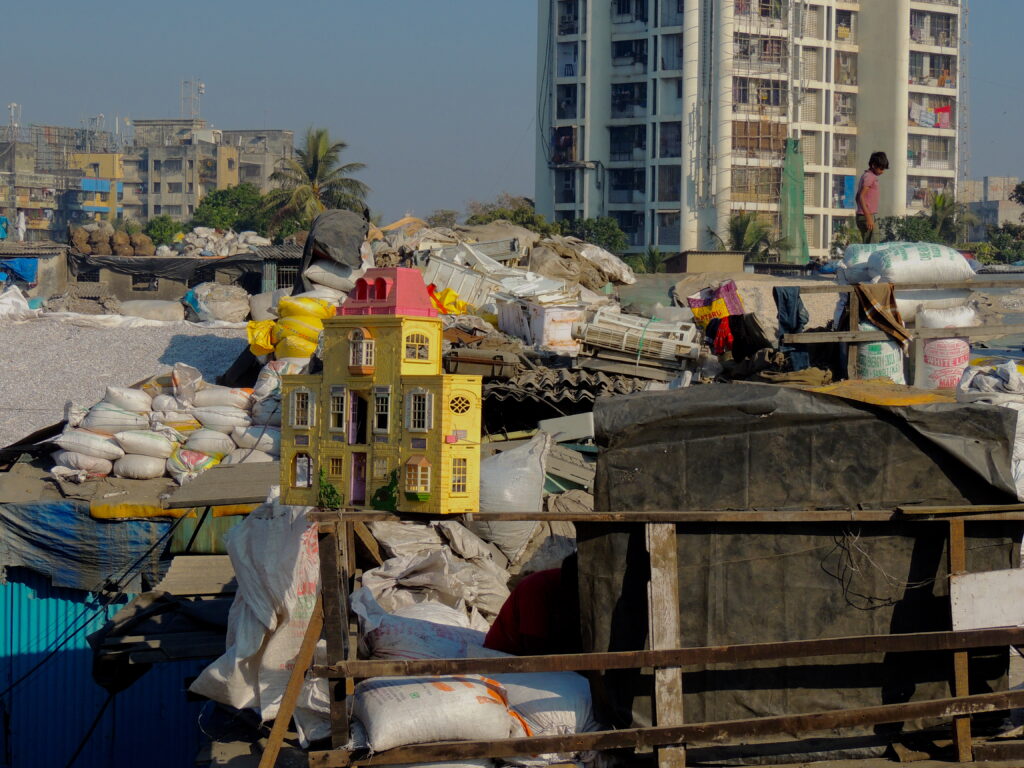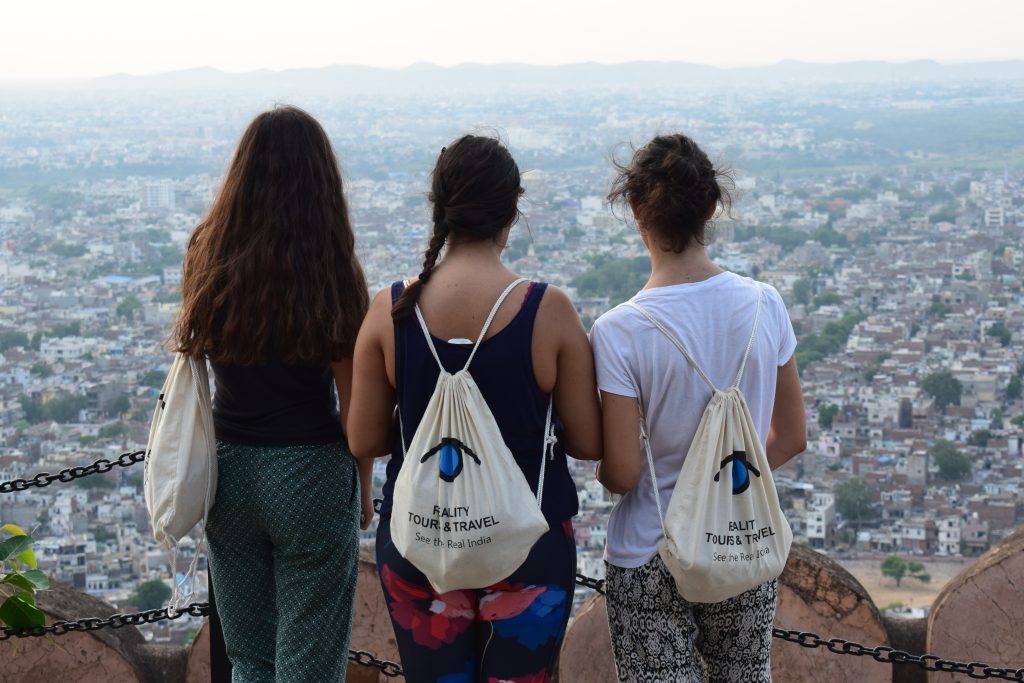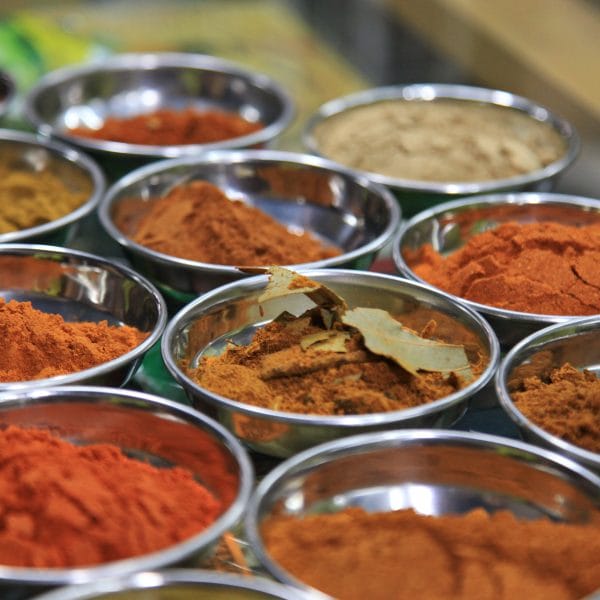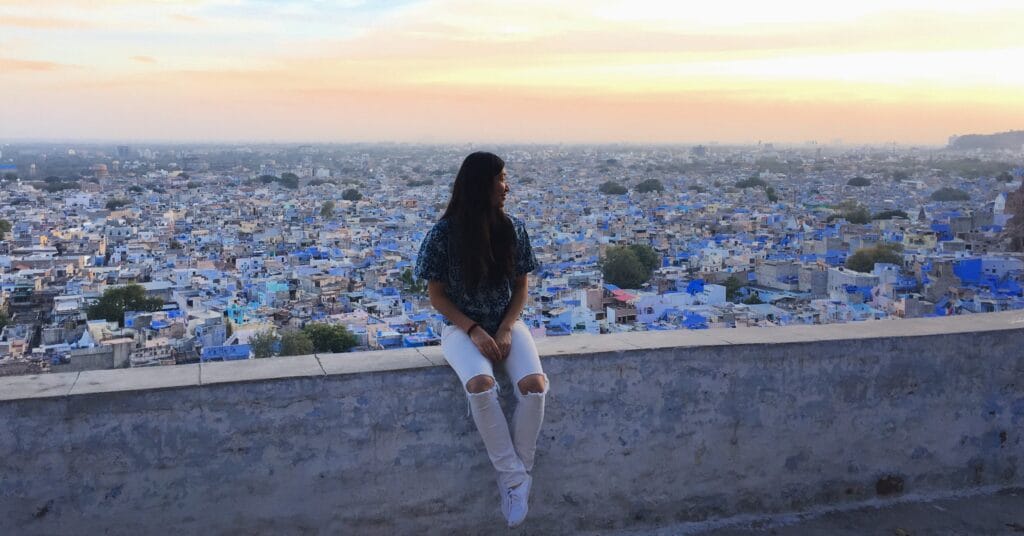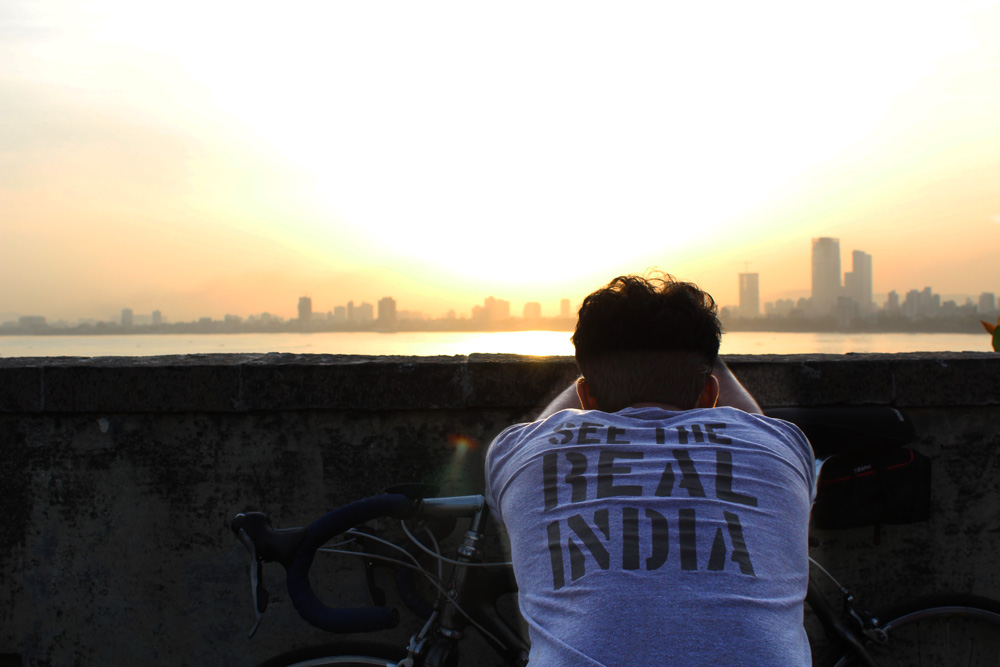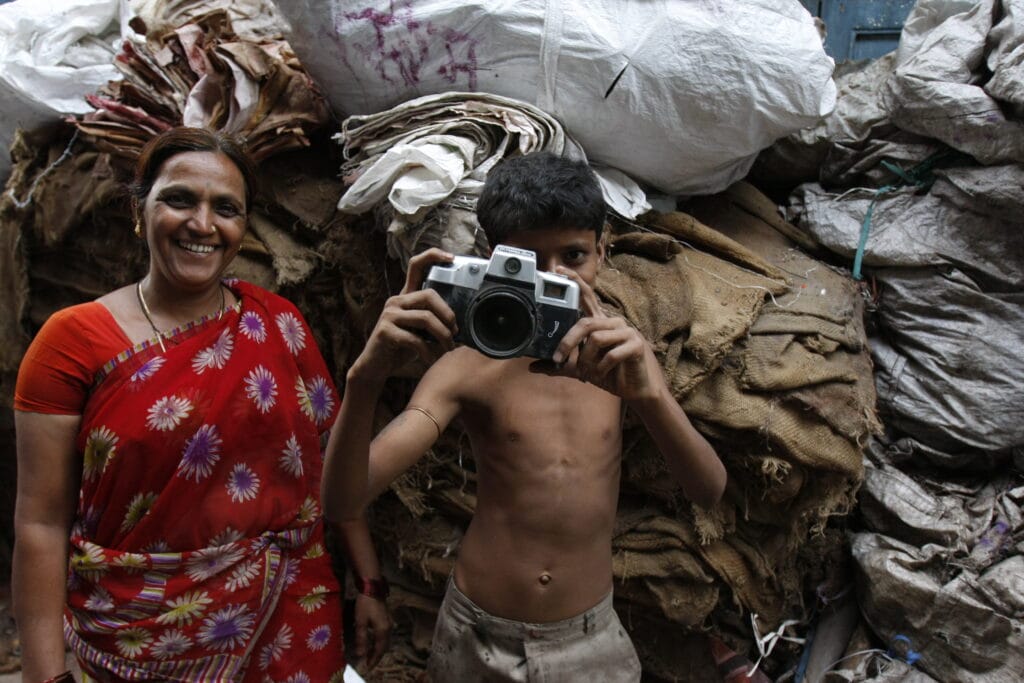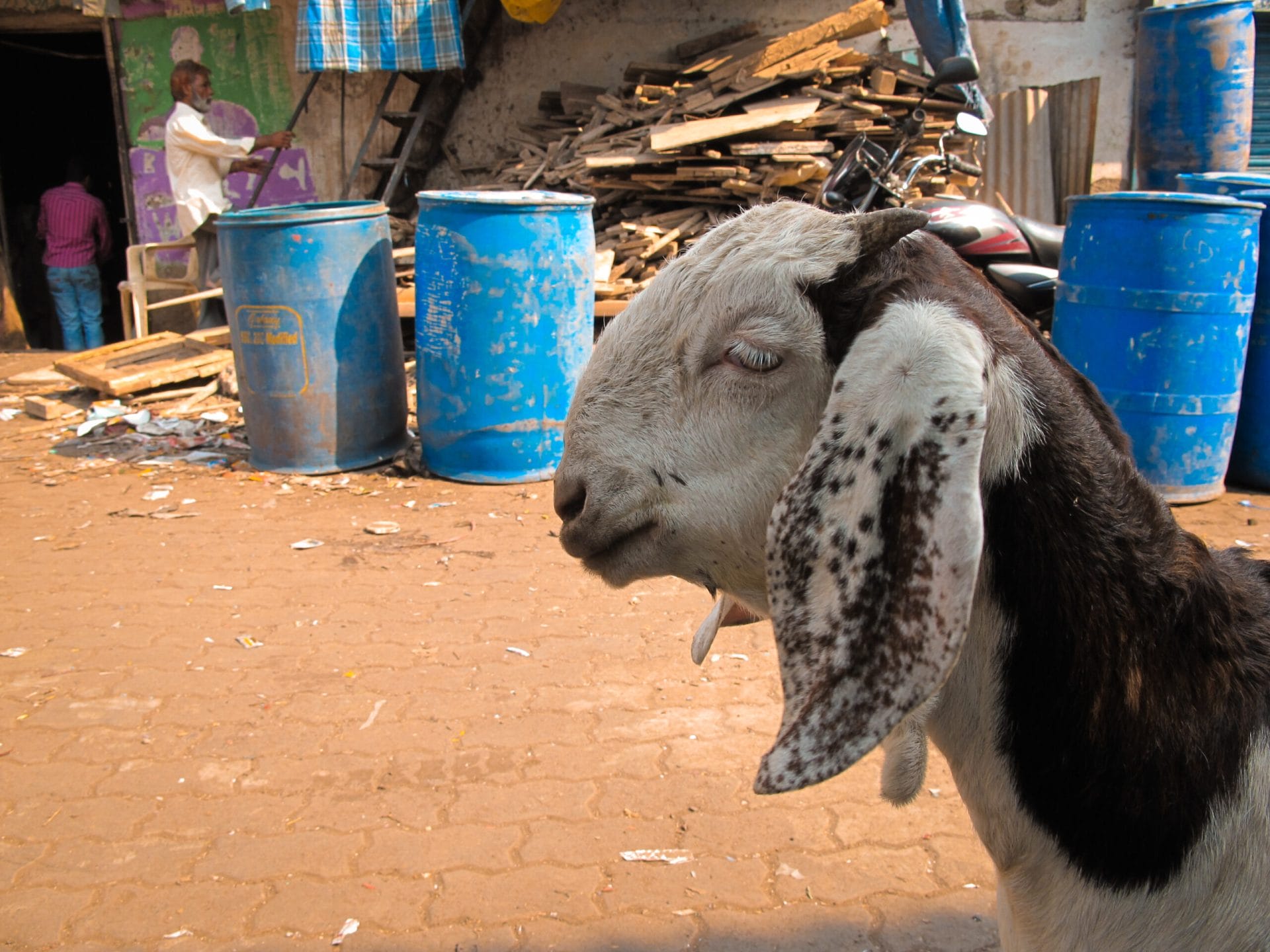Note: this one isn’t for the faint of heart!
It was a boiling hot Saturday morning and my stomach was not feeling 100%, but there was no way I was missing this. When you get invited for a behind the scenes peak at your friend’s most meaningful religious holiday, one I had never even heard of before I moved to India, you don’t make excuses, you go. So I ate the blandest breakfast I could muster (oatmeal), drank a few liters of water, spent some quality time in the bathroom, and headed north to Asia’s largest goat market.
Eid al-Adha, also known as The Festival of the Sacrifice or the Greater Eid, was a little over a week away and every Muslim family in town was in the market for a goat. The festival celebrates Abraham’s willingness to submit to God and sacrifice his own son. Abraham, of course, didn’t sacrifice his son because God intervened at the crucial moment and allowed him to sacrifice a lamb instead. Today, Muslims with an adequate disposable income are expected to sacrifice their finest domesticated animal. Depending on the region, this could mean a cow, camel, goat, sheep or ram. In Mumbai this meant goats and we were headed to the epicenter: Deonar Goat Market in north Mumbai.
Entire families packed into auto-rickshaws with their newly purchased goat in tow, throngs of people filed in and out of a gate as if it were a concert or festival, and what could only be the smell of goat filled the air. We were in the right place. We called Asim and a few minutes later his beaming face appeared among the crowd and he waved us over.
Mumbai often comes alive with this kind of festive energy during other major celebrations too — especially during Ganesh Chaturthi, the city’s biggest festival, when crowds, colors, and rituals flood the streets in a similar way.
Asim is my colleague at work. He is the tour guide manager and is one of the most hard-working, dedicated and genuine people I have ever met. He is also a super star tour guide. But today he was wearing a different hat (I’ll leave aside the fact that he was actually wearing a bright pink train conductors hat that was originally a present for his daughter); today he was a goat salesmen. On a normal year, Asim would come to the market to buy a goat for his family’s Eid celebration but this year he had decided to go one step further and sell a dozen goats himself.
When walking in India you always need to be aware of where you are walking and what is coming at you – this goes double at the goat market. Goat shit on the ground is the least of your worries – you need to keep your head up and make sure that you aren’t going to get trampled. We turned right and pulled up just in time to avoid being hit by the first of a series of bulls careening out of a stable and into the road, loosely guided and goaded by a few men with sticks. After the tenth bull passes we were clear to continue on our way . Before long we had to quickly side step left to avoid getting run over by a pack of goats sprinting down the lane surrounded by yelling Rajasthani men smacking them with sticks.
The market was a series of cattle-sheds that seemingly extended in every direction, forever. In the fields between the cattle-sheds more cattle-sheds were built. Inside the structures, every square inch of space was filled with goats. To save on space, the goat salesmen, who never leave the premise during the week long goat market, hang their sleeping mats from the ceiling. I can’t even imagine where they can find room for these mats at night. On the dirt roads winding between the sheds were street food stalls catering to the shoppers as well as the goat salesmen.
Asim led us into one of the sheds and proudly introduced us to his small herd of goats. Business had been good and he had already sold a good percentage of his goats. He wasn’t worried at all about selling them all off before the festival. Asim explained to us that in addition to the breed of goat which sets the price range, it is really the aesthetics of the goat. The teeth, fur, face all add up to a nice goat. A particularly dashing and proud looking goat will be tied up outside in an attempt to drive in foot traffic from the main road. After getting the run down we were able to guess Asim’s most expensive goat on our second attempt.
Spending time with Asim and witnessing these preparations reminded me of my Mumbai Ramadan tour with Reality Tours & Travels, which gave me a deeper appreciation for Mumbai’s rich Islamic traditions.
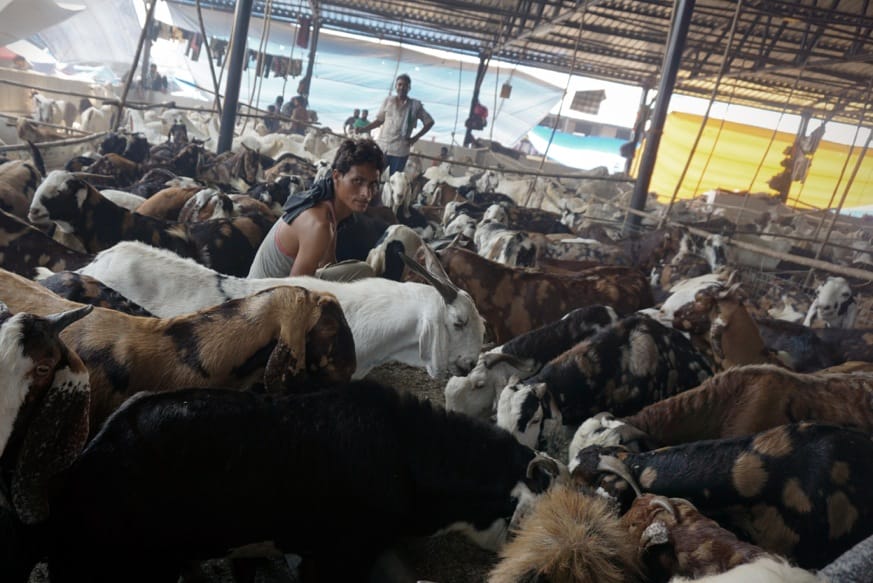
So how much do one of these baah boys cost? Asim’s highest seller went for about $400 US dollars. More expensive breeds can go for a couple thousand dollars. And if you hit the jackpot and it appears that “Allah” or “Mohammed” is written in Arabic on the side of your goat in the form of spots? Then your goat could go for five or six thousand dollars

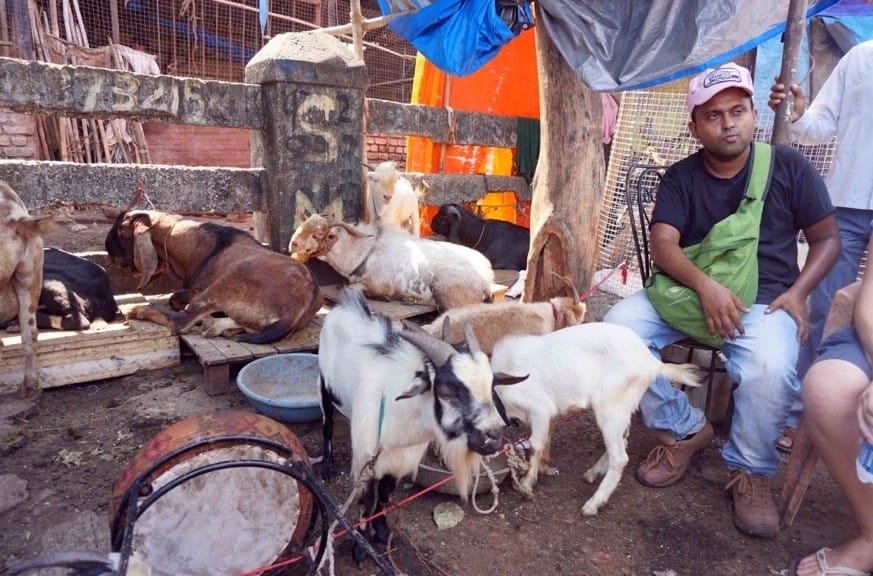
Over the following week we noticed the city streets slowly filling up with goats. On the one hand we enjoyed being able to use our newly acquired ability to judge the rough value of a goat. On the other hand, it was tough looking at these goats that we knew were soon to literally be sitting on the chopping block. And we were going to witness it: Asim had invited us to his family home for the celebration.
Want to experience Mumbai’s cultural diversity firsthand? Join our Dharavi Tour & Family Lunch — led by locals and full of personal stories, traditions, and real community connections.
Read Part 2 of “Eid Al-Adha in Mumbai: One Square Kilometer of Goats” to find out what happened next.

